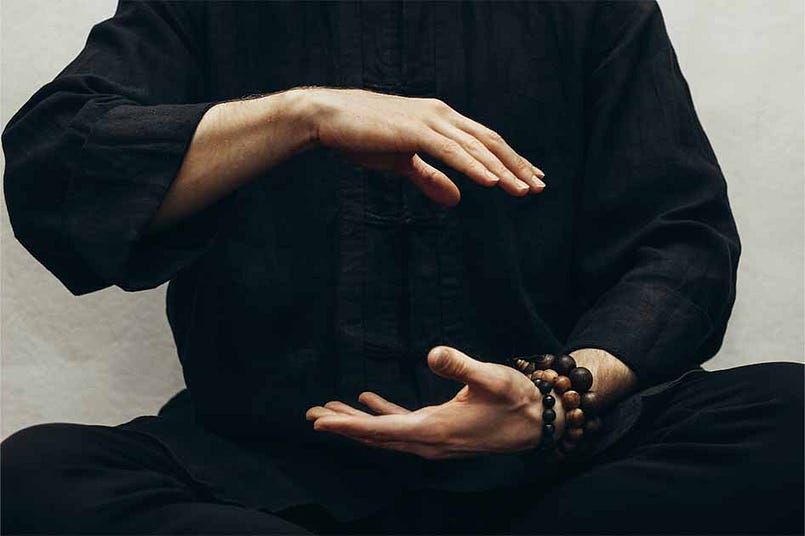The ancient origins of Qigong and meditation practices stretch back thousands of years, intertwining with the very fabric of Chinese culture and philosophy. This fascinating journey through time reveals how these practices have shaped civilizations and continue to offer profound benefits in our modern world.

The Prehistoric Roots
The earliest traces of Qigong can be found in Neolithic pottery, estimated to be between 5000 and 8000 years old. These ancient artifacts depict figures in Qigong-like postures, hinting at the practice’s prehistoric origins. Researchers believe that Qigong may have evolved from shamanistic dances performed by early Chinese villagers.
From Ritual to Health Practice
These early rituals served a crucial purpose. After long days of hard labor in fields and rice paddies, villagers would engage in vigorous dances, mimicking animal movements they observed in nature. This practice helped ward off illness and alleviate aches and pains, laying the foundation for what would become a sophisticated system of health cultivation.
The Evolution of Qigong
As centuries passed, the understanding of these practices grew more refined. Practitioners began to recognize that certain movements were particularly effective for specific health issues. This knowledge gradually became systematized, forming the basis of traditional Chinese medicine and philosophy.
Key Historical Milestones
Several important figures and texts mark the development of Qigong:
- Yellow Emperor’s Classic (2600 BCE): The first written reference to Qigong appears in this foundational text of Chinese medicine.
- Hua Tuo (140–208 CE): This famous physician is credited with creating the “Five Animal Play” system of Qigong.
- Bodhidharma (ca. 500 CE): This Buddhist monk introduced Chan (Zen) Buddhism to China and taught Qigong exercises to Shaolin monks.
Philosophical Influences
The development of Qigong was deeply influenced by major Chinese philosophical traditions:
- Confucianism: Emphasized self-cultivation and social harmony.
- Taoism: Focused on following the natural way and achieving balance.
- Buddhism: Introduced meditation techniques and spiritual practices.
The Secrecy and Diversity of Qigong
For much of its history, Qigong practices were often kept secret, passed down within families or small groups. This secrecy contributed to the great diversity of Qigong styles that exist today, with thousands of recognized forms and potentially many more undocumented variations.
Qigong in the Modern Era
In the 20th century, Qigong began to emerge from its shroud of secrecy. The term “Qigong” itself was coined in the 1940s and 50s, unifying various traditional practices under one umbrella. This period marked a shift towards a more scientific approach to understanding and applying Qigong principles.
The Enduring Legacy
Today, Qigong stands as a testament to the enduring wisdom of ancient practices. Its journey from prehistoric rituals to a globally recognized health practice demonstrates the timeless value of harmonizing body, mind, and spirit.As we unveil the 5000-year mystery of Qigong and meditation practices, we gain not just historical knowledge, but access to profound techniques for enhancing our health and well-being in the modern world. The ancient origins of these practices continue to offer valuable insights and benefits, bridging the gap between ancient wisdom and contemporary wellness needs.


No comments yet.